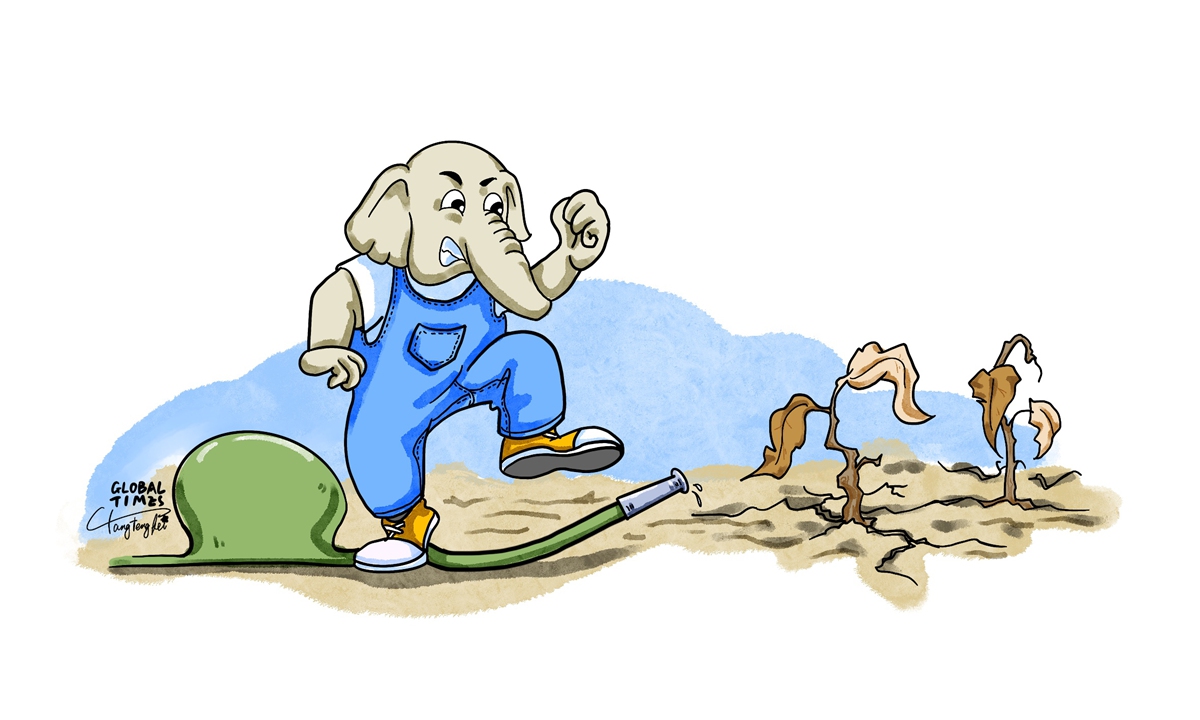
Illustration: Tang Tengfei/GT
China, as expected, has remained the largest source of India's imports in 2020, highlighting the economic complementarities of the two Asian economies which is exactly what could help India to promote its "Make in India" campaign, if New Delhi could adopt a pragmatic approach and seize the opportunity to better connect with Chinese industrial chain.
Despite India's keeping accelerated provocation toward China from border to economic issues in 2020, the country "imported goods worth $58.71 billion from China" in the year, local media outlet the Times of India reported, citing Hardeep Singh Puri, minister of state for commerce and industry.
While China remains on top of its purchase list, the data also laid bare the absurdity of the irrational populism in India which once instigated mobs to stage boycotting products made-in-China in the past two years.
According to the Indian official, the major items of import from China include telecom equipment, computer hardware and peripherals, daily goods, organic chemicals, machinery and electronic products.
As a leading manufacturing power in the world, China possesses comparative advantages in many sectors, making it difficult to be displaced in production chains. With China offering high-quality products at reasonable prices, consumers in India know what to choose themselves; while with high potential for the two sides to promote mutual beneficial economic co-operation, those ill-intended political interference by Indian politicians would only end up in vain.
The import data offers a clear blow to the surging populism in India. Though it may not completely disappear, it will face a narrowing market in the future with diminishing margin effects.
After a year of confrontation, it's clear that it is cooperation is the only possible way for India to eke out consistent economic growths. And it's foreseeable that the bilateral trade between the two nations will keep rising which will significantly facilitate the recovery of Indian economy from the pandemic fallout.
What's worth pointing out is that while India recently showed its intention to loosen obstruction by reinstating some degree of economic cooperation with China, New Delhi, on the other hand, has been playing up the reconstruction of industrial chains with the US, Japan and Australia under the so-called Quad framework.
The differences of the two approaches of India are evident, as cooperation with China will boost its economic recovery from the recession, while the other is more of a political stunt.
The destiny of an industry chain without a valid economic foundation is self-evident.
Essentially it's each country's special economic and industrial structure that determines cooperation or competition among different economies. Taking China and India for instance, the two economies both have large domestic markets, but the two have quite different industrialization structures, leaving significant potential for the two sides to seek industrial connection and to boost each other's development through wider cooperation. Besides the potential, the BRICS also offers a framework for the two Asian members to join hands in various areas.
Compared to building a new industrial chain centering Quad members, better integrating into the well-developed regional industrial chain is clearly a more practical path for the largest South Asian economy.
New Delhi should reconsider its role in the global system, and instead of obsessing with populism which hinders the growth of its industries, better connecting with the Chinese industrial chains may be the right choice for the country's long-term economic development
The author is director of Institute of Bay of Bengal Studies with Shenzhen University. bizopinion@globaltimes.com.cn




